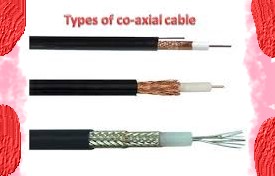How to Terminate Coax Cabling: A Step-by-Step Guide
Coaxial (coax) cables are widely used for transmitting cable television, internet, and other data. While it may seem daunting, terminating your coax cabling is straightforward, provided you have the right tools and know-how. This comprehensive guide will take you through the step-by-step process of completing a coax cable efficiently and correctly.
What You’ll Need
- Coaxial Cable
- Coax Connectors (F-Type or BNC, depending on your requirement)
- Wire Cutters
- Cable Strippers
- Crimping Tool
- Measuring Tape
- Optional: Coax Cable Tester
Steps to Terminate Coax Cabling
Step 1: Safety First
Before you begin, ensure you are in a dry area and not working around live electrical circuits. Safety should be your utmost priority.
Step 2: Measure and Cut the Coax Cable
Use the measuring tape to measure the length you need, then cut the coax cable using wire cutters. Always leave a few extra inches to account for any errors.
Step 3: Prepare the Cable End
Insert the coax cable into the cable stripper. Rotate the stripper around the line to remove about 1.5 inches of the outer jacket. Make sure you don’t cut into the inner braid.
Step 4: Expose the Inner Conductor
Peel back the braided and foil shield, exposing the inner conductor (known as the center conductor). Ensure the inner conductor is straight and free of braid or foil.
Step 5: Attach the Coax Connector
Slide the coax connector over the exposed inner conductor until it fits snugly against the internal insulation. The center conductor should protrude slightly from the connector.
Step 6: Crimp the Connector
Place the connector into the crimping tool so that the tool aligns with the crimping section of the connector. Apply pressure to crimp the connector onto the cable firmly. Double-check to ensure the connector is secure.
Step 7: Test the Connection
Although this step is optional, testing the cable using a coax cable tester is a good practice. This ensures the termination was successful and the line is ready for use.
Common Mistakes to Avoid
- I am not cutting the cable straight, which can cause the connector to be misaligned.
- Over-stripping or under-stripping the cable. Too much-exposed conductors could cause a short, while too little might result in a weak connection.
- I am not crimping the connector firmly, which leads to a loose or unreliable connection.
Conclusion
Terminating coax cabling may sound complicated, but you can do it yourself with the right tools and a little patience. Not only will you save on labor costs, but you’ll also gain a better understanding of how coaxial cable systems work. Following this step-by-step guide will ensure a secure and efficient connection for all your coaxial cable needs.
Progressive Office Cabling
Founded in 1986, Progressive Office’s success is a direct result of years of commitment to seeking cost-effective solutions. Progressive teams are committed to installing and operating your data cabling, access control, and telecom systems while minimizing disruption and downtime. Call our toll-free number (800) 614-4560 today.

